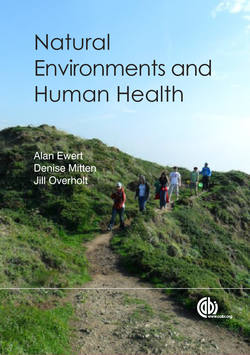Читать книгу Natural Environments and Human Health - Alan W Ewert - Страница 22
На сайте Литреса книга снята с продажи.
First humans stage
ОглавлениеThe first human stage dates from the early Homo sapiens to about 50,000 years ago and overlaps with parts of the Stone Age and parts of the Early and Middle Paleolithic. Referred to as prehistory because there is no written record, archeologists primarily identify activity through their cultural artifacts of stone tools. The use of the technology of the period to describe the culture continues to the present in part because these artifacts are durable through time and thus preserved. Over time more archeological evidence continues to be found, causing updates in our perceptions of past cultures (see Box 2.1). The current dominant paradigm of equating more technology to more civilized or advanced cultures is, however, overlain on history and continues in the next stages. Because signs of warfare do not show up until later, these people were thought to be hunters and gatherers who lived in small equalitarian societies. They lived in the natural environment and possibly did not differentiate between the earth and the cosmos. Without electric lights the stars appeared closer and the stars were used in the cycles of their lives.
Little to nothing is known about the WorldView of pre-modernity humans; however, our understanding of brain evolution helps us construct theories. We know that in this first 250,000 years of human development our brains evolved in close contact with nature. Humans were part of ecosystems, developing with the other flora and fauna in a mutualistic manner. They may have relied on instinct and intuition along with vision, smell, hearing, and touch; they were connected in every sense to the natural world. On most days humans walked about 12 miles and our brains have developed to work better with exercise rather than being sedentary. The outdoor environments by their nature have a certain amount of instability and unpredictability, thus humans evolved to be problem solvers through exploration and while we are in motion. Because the size of the human birth canal is limited, children are born needing years of parental care. Brains remember and encode what we pay attention to (Medina, 2008). Humans, especially females, had to fully pay attention to childbirth and rearing, which likely helped human brains strengthen neural networks for love and care. Humans have mirror neurons and babies, young children, and adults have the ability to mimic behavior. Mirror neurons might have helped early humans take cues from animals. For example, Sheldrake (2005) wrote about villagers in Thailand who followed stampeding buffalo up a hill, not seemingly sure why they did. Their lives were saved from the tsunami.
Table 2.1. Six major shifts have occurred in the known history of humanity each with its dominant WorldView as gleaned through artifacts and written history.
Box 2.1. Understanding WorldViews of the past
Information about WorldViews is gained through different types of records, including tools, other artifacts, and written material, when available. This means that history is pieced together from the remains that survived and the ways these remains are interpreted. Missing evidence or remains that may be discovered in the future can change the prevailing beliefs of the past. For example, recent evidence of the use of fire by early people dates it to 1 million years ago, much earlier than previously thought. In Germany, eight well-preserved spears found in 2011 and dated to be 300,000 years old show humans using these tools many thousands of years earlier than thought (University Tübingen, 2012).
While the early humans may not have articulated a WorldView, they may have had an innate ability to care for their young, believed in immediacy, believed in the importance of rearing their young to survival and of children and adults learning through experimentation, and understood cooperation at least at a family level. Human brains are emotionally empathetic, which may have influenced a WorldView of the importance of tending to babies. Brains evolved such that people felt a need to belong, which helped children stay close to kin as they learned to navigate the world and helped family groups stay intact to help each other. This feeling of a need to belong, also helped with oxytocin, first developed with immediate family and kin and later spread to kith. Learning to cooperate and trust each other is a capacity that allowed for the expansion of the human species. While early humans may not have had a choice in traveling miles each day, they possibly incorporated it into their WorldView that moving is a part of life. Returning to the concept of humans’ connectedness with nature, our brains today continue to work better when we are moving our body. Current research supports that people who exercise outperform sedentary people in long-term memory, reasoning, attention, and problem-solving tasks (Medina, 2008). Implications of this impact of movement on brain functioning are discussed more in Chapter 7.
Carol Lee Flinders (2002/2003) said that the relationships the hunter–gatherers had with the natural world, with one another, and with their concept of spirit included trust, inclusion, and mutual reciprocity, complementing her understanding of their society’s core values: intimate connection with the land, empathetic relationship with animals, self-restraint, balance, expressiveness, generosity, egalitarianism, playfulness, and non-violent conflict resolution. If they had a cosmological story, it may have included Flinders’ description of ‘values-of-belonging’ and it may have been the enchanted universe. It would be easy to imagine early humans believing that their world was alive with forces, powers, and heavily influenced by their constant immersion in the natural world. They allowed nature’s cycles (stars, seasons, migratory paths) to generate a rhythm for their lives.
